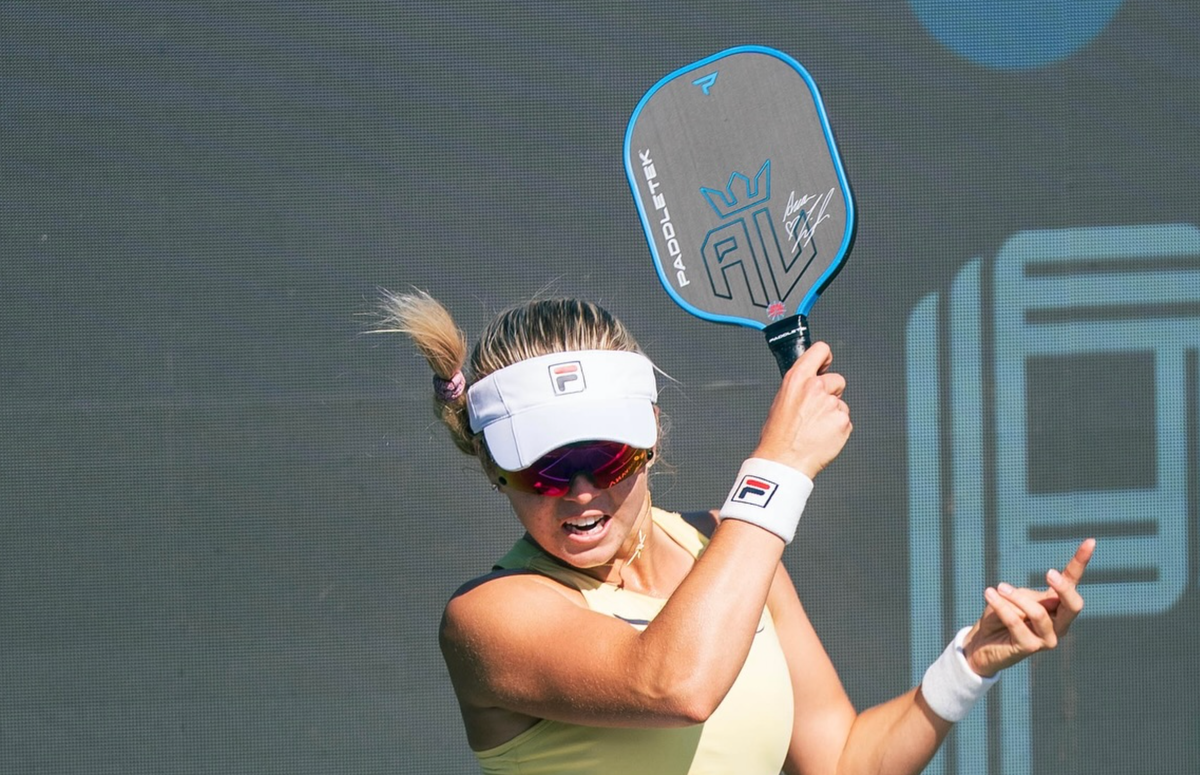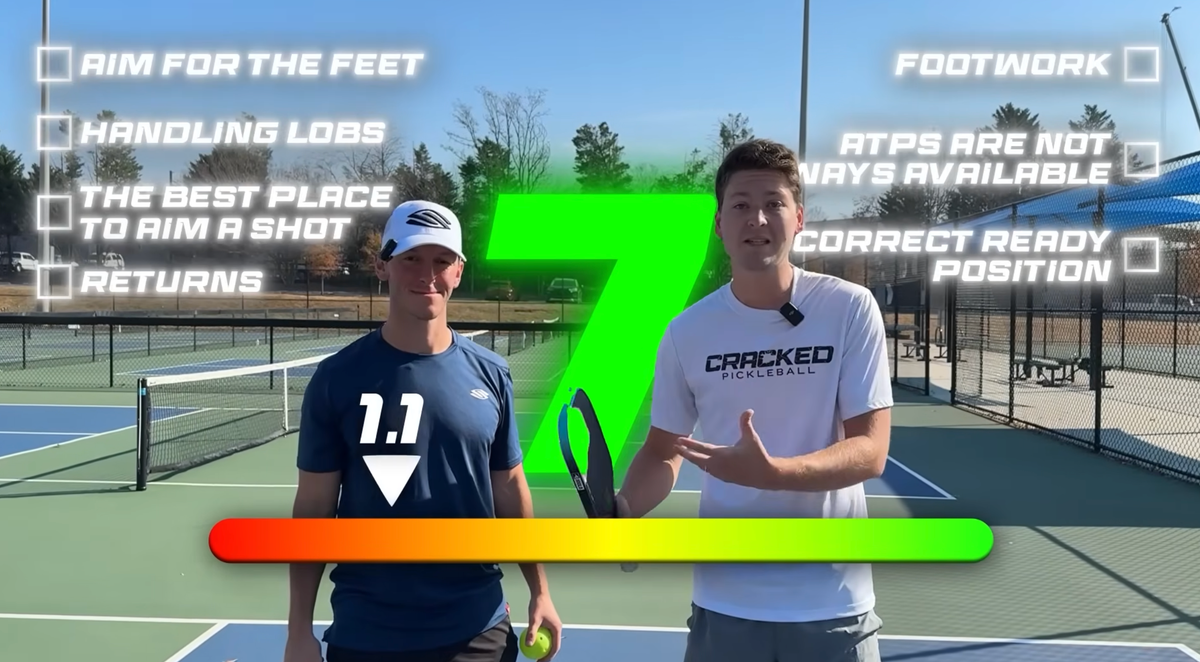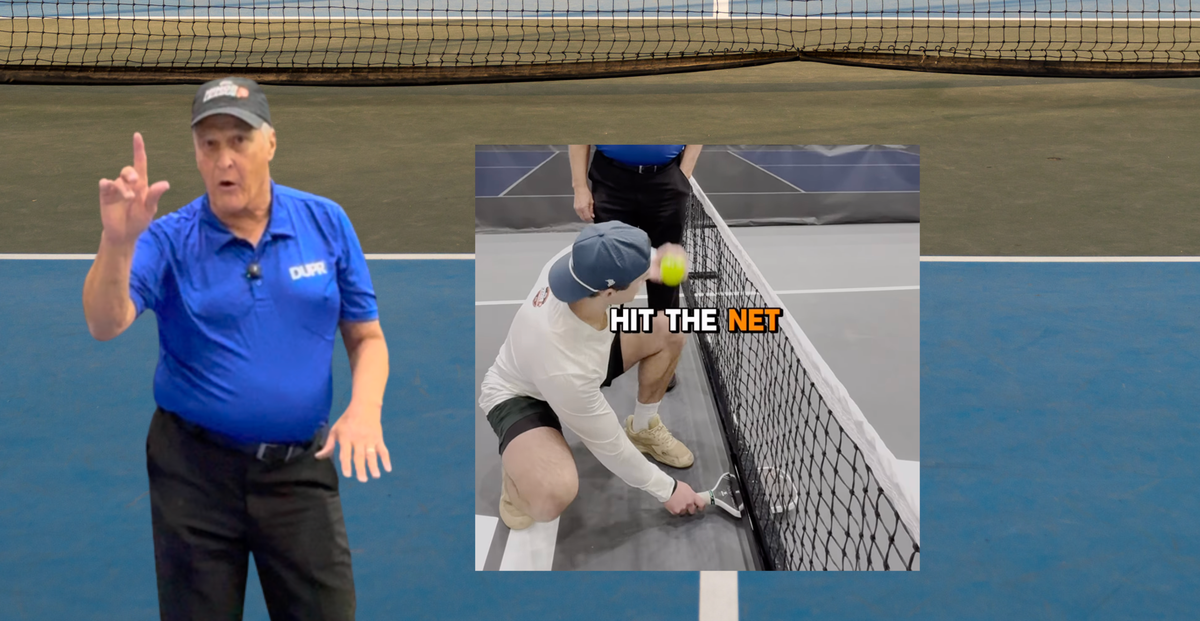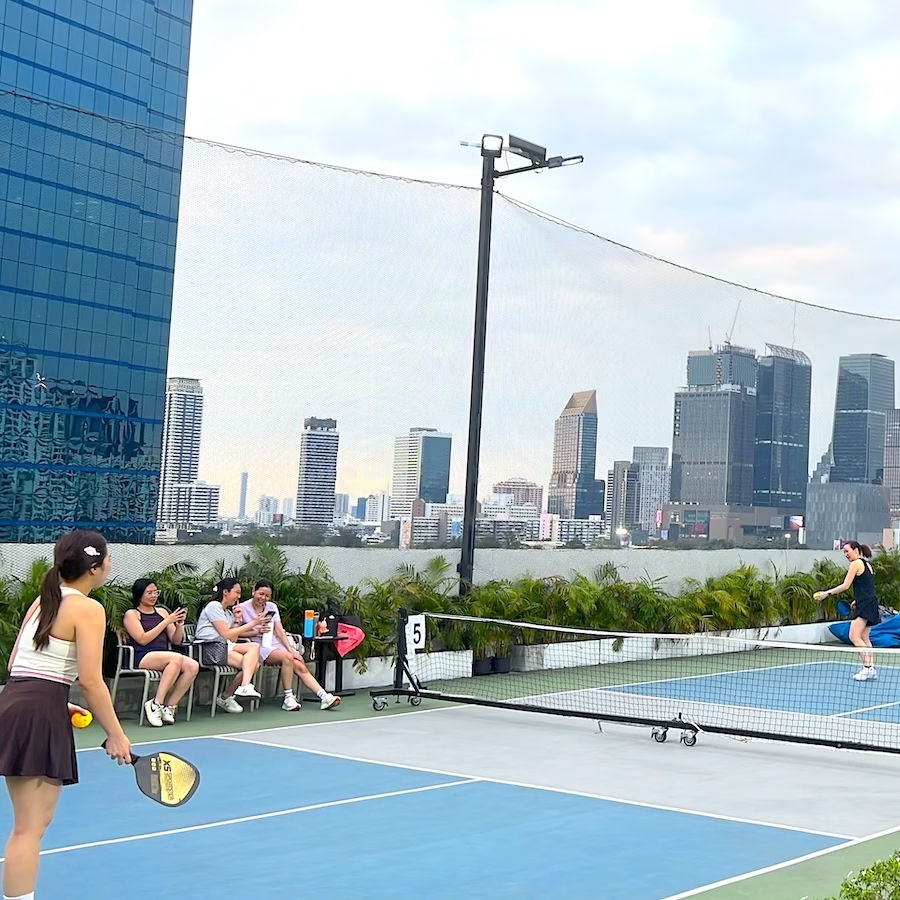 (Picture Destin Perry)
(Picture Destin Perry)| This is a phenomenal paddle with great feel and awesome power and spin. But it would be an understatement to say it has had a little controversy. This paddle at the time of this review has been delisted by the USAP, which caused months of back and forth between players and the companies. There also lies the issue of something called “Core Break In” which in Gen 3 paddles sees the inner foam core becoming more “hot” over time, making the paddle play different over long periods of play. Additionally, this inner core can break apart, and cause almost a “rattling” feeling or sound. There are too many risks and uncertainties with this paddle. Despite its peak performance, I can’t recommend it as a first or even second choice. If for whatever reason, you still want to play with this paddle, it is a great weapon in the hands of an advanced or high intermediate player who can adequately utilize its great spin potential and pop out of the sweet spot. It suits harder hitters and bangers but takes time to show its potential in the short game and touch shots like slices. |
| Paddle Weight | 8.0 Oz |
| Paddle Face Material | “Charged” Carbon Friction Surface (CFS) |
| Paddle Core Material | Reactive Honeycomb Polymer Core |
| Paddle Shape | Elongated Standard |
| Paddle Length | 16.5″ |
| Paddle Width | 7.5″ |
| Grip Size | 4.25″ |
| Handle Length | 5.5″ |
First Look
The Joola Gen 3’s were marketed to be a new level of “heat” from the paddle, with huge spin and power. While they do deliver on these promises, they come with a high price tag of $269.99 ($199 now) and the potential for permanent delisting by the USAP.
This review is brought to you by me, Coach Destin Perry of Tallahassee FL, a 4.0-4.5 player and Pickleball Coach with years of experience and modern pickleball tournament play. My style of play is very “Drive and Drop” oriented, with a focus on spin and powerful strokes.
I am a certified gear nerd, and I come originally from tennis. I have a technician certification for rackets and enjoy tinkering and modifying gear with lead, balance, and different setups to optimize my play. In my opinion, this is one of the most satisfying aspects of understanding racquet sports and your own game! But beware of the rabbit hole!!
 (Picture Destin Perry)
(Picture Destin Perry) (Picture Destin Perry)
(Picture Destin Perry)Background Research
The Company: Joola
Joola has been a key player in the pickleball market for a while. Their Gen 2 Perseus paddle has become one of the most common sights at every player gathering.
With this new, mishmashed release and the way they’ve handled their paddle listing, I believe it will impact their brand’s reputation in the coming months. I hope they bounce back stronger and manage this situation well in the weeks ahead.
Specifics of the Paddle
This paddle is designed to be a top heavy paddle to push power into the ball. Many players comment on its top heavy feel, and while some prefer this, its important to note that this isnt for everyone. Advanced players who can handle the weight without losing hand speed will love this paddle. However, players who prefer a quicker paddle head style might want to look for something more whippy and maneuverable.
As a current and former tennis player, I prefer to have a pretty hefty paddle, and for me, I actually added some weight in my normal spots, and found that the paddle performed well and to my liking.
Preliminary Impressions
My assumption was that the paddle would have major plow through, and also generate a lot of spin. I wasn’t wrong. The paddle excels at redirecting the ball with its swing weight and performs best in singles. In the early strokes of a point, powerful directed drives are more crucial than drops, making it particularly effective in singles play compared to doubles.
The build felt solid, and the foam core towards the edge of the paddle felt secure and solid on contact, and to the hand.
Face
Joola’s paddle face features a “Charged” Carbon Friction Surface. When asked for clarification, they explained that this technology involves an additive bonding treatment that strengthens the paddle’s surface for a crisper feel and greater energy return. However, the specifics of this technology and how it differs from older models remain unclear.
The grit texture does grip the ball well, and shots from the sweet spot feel great. However, I believe this performance is mainly due to the addition of the Foam Core rather than the friction coating.
Core
To me, the core is what differentiates this paddle. It consists of strips and layers of EVA-style foam near and on the sweet spot, as confirmed by some online channels that cut the paddle in half to see inside. These strips make the paddle play more like a tennis racquet than a pickleball paddle. They also cause the paddle to “break in” over time, which likely led to its delisting by the USAP due to consistency and launch issues. This unique design definitely makes it a powerful weapon, which is why it garnered so much attention.
Handle & Grip
I’m not picky about paddle handles. In pickleball, I can play with various grips, and it’s not a make-or-break factor for me. I often add weight to my paddles and don’t mind using an overgrip or extra replacement grip to build up and add weight to the handle.
Paddle Main Strengths & Scoring:
These three attributes are the paddle’s strongest features.
| Power | 9/10 |
| Spin | 9/10 |
| Comfort | 8.5/10 |
Other Attributes reviewed:
Sound and Vibrations: It was very muted, unexpectedly so. “Crisp” but with little to no sound. I expected a “thump” from the core, but got more of a bite, and a “crack.”
Again, some users have reported after the foam core interior break-in that they hear rattling, so keep that in mind.
Durability assessment: What I don’t like about these paddles is that they seem to give great value in performance with the foam core, but then put a good paddle on the “durability clock.” I’m not a huge fan of this and see the industry potentially going down a dark path of forcing players to rebuy paddles every few months.
Comparative Analysis
I’ve been using the Diadem 18K Speed Pro (review coming soon), and it has been performing as expected. When comparing it to the Gen 3 Joola, I notice differences in feel and the sweet spot. However, due to the durability concerns with the Gen 3 Joolas, I prefer other high-performing paddles that don’t have any negative controversy.
Advanced players will surely be gravitating away from the Gen 3s until the controversy clears, and will be seeking more performance from brands where they can still play in tournaments legally!
Overall, it was an exciting paddle, and it’s a shame the controversy has taken the wind out of its sails. Hopefully, we’ll soon see a change in fortune for the company and experience the magic of Gen 3 technology in a legal paddle.
Anuncie Aqui / Advertise Here
Sua marca para o mundo Pickleball! / Your brand for the Pickleball world!

 English
English  Spanish
Spanish  Portuguese
Portuguese  German
German  Italian
Italian  Japanese
Japanese  French
French  Polish
Polish  Russian
Russian  Netherlands
Netherlands  Hungarian
Hungarian  Turkish
Turkish  Videos
Videos  Pickleball Portal
Pickleball Portal








 English (US) ·
English (US) ·  Portuguese (BR) ·
Portuguese (BR) ·